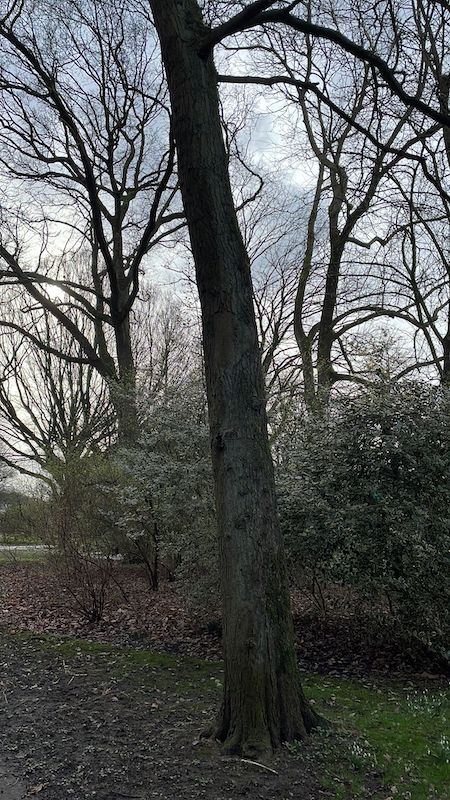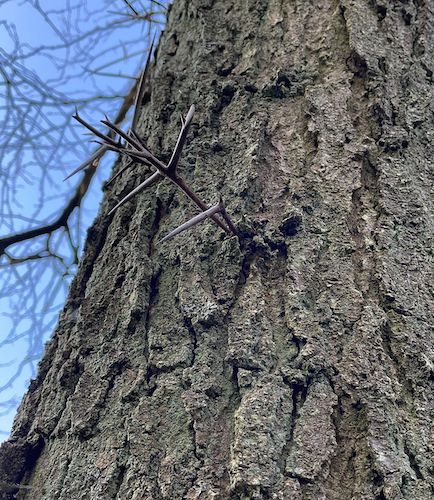The Tree Library

Common name: doornloze valse christusdoorn (NL), toarnleaze (falske) Kristusdoarn (Fryske), Honey Locust (EN)
Native range: North America
Pollination: Insects
Seed dspersal: Birds and mammals
Conservation: Least concern (IUCN, last assessed 2018)
The doornloze valse christusdoorn is well-known for its thorns and because is often eaten by cattle and other animals. This tree is very tolerant to drought and salinity and it is often used in soil restoration. The thorns found in the Honey locust are thought to be used as an ancient defense mechanism from mastodons and mammoths
USES:
Cherokkee communities (native North American group) were believed to cultivate the honey locust for food and to build tools.
- Food
- Soil restoration
- Gum
- Wood
- Medicinal

The bark with thorns…

References and more information at: